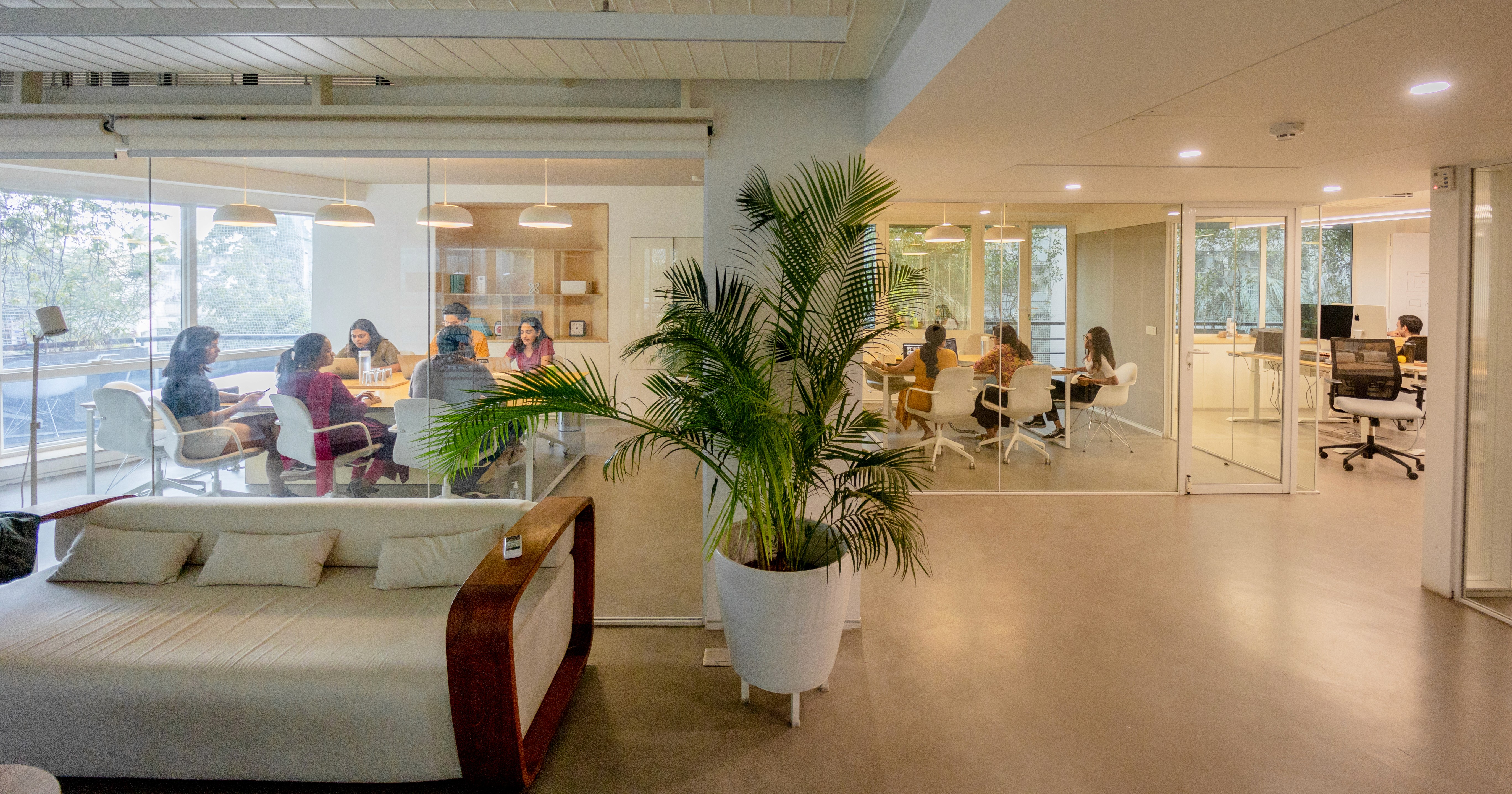We have news: Obvious is now a part of the PhonePe group. We’ve thought long and hard about this decision, and are super excited about this new future.
Obvious has always been public-by-default. Everything we could share, we did. In that spirit, both of us felt it was only fitting that we tell the full story behind our biggest decision.
We spent the last thirteen years designing interfaces for a new world, creating products that ended up on hundreds of millions of smartphones. This is the story of that journey: one that starts with a conviction in design and ends with a decision that changes the course of our personal and professional lives.
Where it all began
Back in 2007, while the iPhone was kicking off a new era of personal computing in San Francisco, our own digital revolution was brewing in India. In just a couple of years, affordable smartphones were flooding the Indian market. At the same time, in a quiet bungalow in the leafy neighbourhood of Cooke Town, Obvious was born.

Our first, sleepy little studio
We were lucky to get started just as smartphones took off, and we were deeply excited about a future where everyone had a powerful, internet-connected device in their pockets. We decided to focus on building for smartphones, and that was the first of many choices that would set us apart.
In those early days, we weren't sure what we were really good at. Like anything in life, the path from aspiration to reality is paved with stumbling efforts. But over time, we found our groove: we excelled at building simple, elegant, accessible products that people loved. This led us to visionary founders who were equally excited about building the future of the internet on palm-sized devices. It set the stage for our foundational partnerships, where we built the first apps ever for Myntra, Flipkart and Swiggy. Those—and many other apps from early unicorn companies—came from Obvious. Even today, when people ask about our work, we cheekily respond, “Our portfolio is on your phone”.
It felt like we had something promising on our hands. We decided to go from creating a few products each year to building many more. Obvious grew slowly, but with purpose. The two of us were committed to pushing the boundaries of craft, and that became the foundation of our team’s culture. It drew in amazing people who wanted to do their best work. We shared our methods freely, publishing our entire company’s manual as publicly-available playbooks.
Restless at the top
After a decade of running Obvious in that fashion, we were at the peak of our professional lives. We had an explosive body of work, an incredible team, and a supportive community. 2022 was also shaping up to be our best financial year yet. Our revenue surpassed design firms 4-5 times our size in the region, and our profit margins were double those of the healthiest firms in our industry worldwide. On all fronts, we'd built something better than we'd ever dreamed. And yet, we felt a sense of incompleteness.
It felt cosmically timed. The world was still reeling from COVID19. India was an exceptionally challenging place to be. Everyone was forced to confront their mortality and face the head-in-hand type of questions about purpose and meaning. We were no different.
For years, Obvious had been our source of purpose. But after 2020, we both became sharply aware that life is fleeting. Even on the busiest of days, we found ourselves questioning whether we were truly making the most of our time. The ambitions that we had said we would achieve “someday” now burned with urgency.
Don’t Panic!
As we came out of the pandemic, it was clear that we wanted a significant step-function change. We didn’t yet know exactly what shape it would take, but we had long been certain about what it would never be.
While designing our central Bengaluru office, we’d intentionally added only 42 desks (a hat tip to Douglas Adams). Sure, a growing team is one of the most traditional signs of success. But we weren't interested in just adding more people to do the same things over and over again. Those 42 desks were a reminder that growing linearly like most firms—more people, more revenue—was not our path. So what was our path?

To discover that, the two of us looked at a few core principles that made Obvious…Obvious. Depth was the first: we consistently turned down easy, short-term projects to work on projects that we could immerse ourselves in over several quarters to years. We wanted our next step to be something we could similarly pour our hearts into for years to come. We’d also developed significant expertise across different domains, cross-pollinating good ideas from one to another. Our next step also needed to offer enough surface area to allow for this cross-pollination, helping our work compound over time. Of course, we still wanted novelty; we thrived on bringing bold new ideas to life, and that wouldn’t change.
Both of us also wanted more of what we’d tasted occasionally, like solving problems at population scale. We were itching to tackle the unique complexities that come with designing for hundreds of millions of users.
Going back to our core principles made the way forward a lot clearer. To chase after this nonlinear change in a nonlinear way, a consulting firm—at least the kind we were running—was no longer the right vehicle. The only way to achieve such growth was through a product. But do we build our own, or join forces with an ambitious product business?
Shaking things up
We thought the choice was clear at first: We’d always been independent, so building our own product was the most obvious path. But given the magnitude of this decision for us and for our colleagues, we made sure that we looked at it from every possible angle. We worked with an amazing coach (Hi Gaston!) and spent many, many hours talking to peers and mentors.
The process took six months, and it was a lot of soul-searching. We realised that what mattered most to the both of us was freedom to make our own decisions—which is why we initially wanted to build our own product. As long as we had our autonomy, joining forces with a product business presented clear advantages. The biggest draw was that we’d inherit the scale we aspired to work at immediately, instead of spending years trying to get there on our own (if we ever did).
And so, we had our decision: Obvious would find a new home.
We’d flirted with the idea a few times, mostly because several clients had shown interest. This time, though, we were the ones approaching them. Navigating this process was entirely new to us.
The process was long and exhausting, a story in itself. We struck up serious conversations with product startups that had the scale and ambition we craved. We also talked to some genuinely interesting private equity firms. Some offers were financially tempting, testing our resolve. One, in particular, stood out. It wasn't what we'd pictured, but their plan was enticing: grow the consultancy using our methods, keep our team together, and let us start a new product venture on the side. It was probably the only offer from a non-product acquirer that we seriously considered.
All these talks helped the two of us clarify what we really wanted for our future. We spent nearly a year talking to different companies and founders, sticking to our standards throughout. It paid off: we found a place that not only met our expectations, but exceeded them.
It was PhonePe.
Our new home
If you know Indian tech, you know PhonePe. If you don’t, they’re India’s largest fintech startup with over half a billion registered users at the time of writing. Not only is their scale unmatched in India, but they are also one of only a dozen consumer apps globally to have ever reached this level. They've changed how millions of people use money, making digital payments feel as natural as cash. They’re also expanding beyond finance. They’ve taken a bold step into trading with Share.Market, and are redefining hyperlocal e-commerce with Pincode. With the Indus App Store, they're taking on an even bigger challenge: building a homegrown app ecosystem worthy of taking on current incumbents like Apple's App Store and the Google Play Store.
So when Sameer, PhonePe’s co-founder called the two of us in for a conversation, we were genuinely excited about the possibility of working together. Here was the scale and complexity we had been searching for, spread across industries we knew well and had built institutional knowledge in. Even better, we could work on all of it under one roof and see our efforts compound.
Through the many conversations the both of us had with Sameer and Rahul Chari, something else became clear to us: despite PhonePe’s meteoric growth, they’d managed to preserve a startup-like agility that resonated deeply with us. Our entire company could fit into one of their smaller meeting rooms but the values that drive PhonePe were very much aligned with ours. There was both a sense of stability and a drive to redefine the status quo, and that made us feel like we’d found the perfect environment and leadership to make a lasting impact.
On a more personal note, this also felt like coming full circle. One of the first mobile apps we ever worked on (all the way back in 2012) was an app for Flipkart called Flyte, with Sameer and Rahul. Getting to work with them again would have been incredible. Despite being eight years into their journey, every day and every conversation at PhonePe is like Day Zero, and that energy is contagious.
An end and a beginning
From 2012 to 2024, we built and ran a well-loved design studio. We helped many iconic companies grow from small startups running out of small apartments into household name public companies. As technology went from luxury to necessity, we were the first port of call for ambitious founders who were looking to use design as a force multiplier. For all that and more, we are grateful.
Great stories are shaped by many hands, and ours was no different. To our clients, many of whom have become friends (and supporters and even colleagues!) over the years: thank you for trusting us. To everyone who has been so gracious with their time, support and counsel over the years: thank you. And lastly, and most importantly: we can say with complete honesty and a lot of pride that the team we built was the best product to ever come out of Obvious. Together, we made Obvious more than just a design studio. We made it a beacon of craft, culture, and community. These have been the best years of our lives thus far.
To colleagues who join us at PhonePe: thank you, and buckle up. The scope and scale of this opportunity is both daunting and thrilling. But we know we’ll do great things together, once again.
